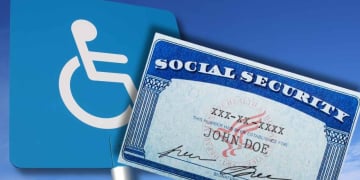Supplemental Security Income (SSI) beneficiaries received two disbursements in May 2025. This situation is the result of a scheduling adjustment implemented by the Social Security Administration (SSA). No payments will be made next June.
The reason is that June 1, 2025, is a Sunday. The SSA does not process payments on weekends or federal holidays. Consequently, the June payment was moved up to Friday, May 30. This is standard administrative practice.
SSI sends 12 payments per year: Why doesn’t June come with a deposit?
Although it may seem like an additional payment in May, this is not the case. The second May deposit corresponds strictly to the regular June benefit, issued in advance. Therefore, no SSI deposit is scheduled for June.
The next regular payment is scheduled for Tuesday, July 1, 2025. The SSA emphasizes the importance of beneficiaries planning their finances with this temporary modification in mind. The schedule will return to its normal sequence in July. Similar adjustments will occur later in 2025. September 1st falls on Labor Day, a federal holiday. Additionally, November 1st falls on a Saturday. Both days are non-working days for the SSA.
SSI payments for September and November will also be advanced. The September deposit will be made on Friday, August 29, 2025. The November payment will be issued on Friday, October 31, 2025.
Consequently, no SSI payments will be made during September or November. Beneficiaries will receive these funds during the previous month. The regular sequence will resume in October and December, respectively. In total, each single beneficiary or couple will receive 12 payments in a year, one for each month.
Requirements for accessing SSI in 2025 updated
Eligibility for the SSI program in 2025 is subject to strict criteria defined by the SSA. Applicants must simultaneously meet demographic, income, and resource requirements. Immigration status and residency are also determining factors.
Regarding age or medical condition, you must be 65 years of age or older. Alternatively, you must have a disability that severely limits your ability to work for at least one year. This also applies if the disability is expected to result in death, or you are legally blind.
Monthly income must remain below specific thresholds. For an individual, the earned income limit is $2,019 per month. This limit may vary for couples or applications filed by parents for children.
Income and resource limits to access SSI payments
Other income, such as disability or unemployment benefits, pensions, etc., are considered. Some income, such as certain non-recurring benefits, is excluded from the calculation. The maximum amounts for eligibility in 2025 are $967 a month for individuals and $1,450 a month for couples receiving benefits.
Regarding resources, the value of assets must not exceed $2,000 for individuals. For couples where both are beneficiaries, the limit is $3,000. Parents applying for a child face an increased limit of $2,000.
Certain resources, such as the primary residence, are excluded. A vehicle used for transportation is also generally excluded. Other specific assets may not count, depending on SSA regulations.
Conditions of residence and status that also affect SSI eligibility
Citizenship or immigration status is essential. You must be a U.S. citizen or a “qualified immigrant” according to the Department of Homeland Security (DHS). Examples include legal permanent residents or certain humanitarian parolees under specific conditions.
Residency must be within the 50 states, the District of Columbia, or the Northern Mariana Islands. Residents must not remain outside the U.S. for a full month or 30 consecutive days. Failure to do so may affect eligibility.
Other requirements include not being confined to a public institution for an entire month. There are exceptions, such as homeless shelters. Disabled persons under 65 years of age must demonstrate earned income of less than $1,550 per month in the month of application.
Maximum SSI Benefit Amounts 2025
In 2025, the SSA will set the maximum monthly SSI amounts. These amounts represent the federal base payment. Some states add a supplement, but the federal amount is the guaranteed national floor.
For an eligible individual beneficiary, the maximum monthly amount is $967. This is the standard payment for an individual who meets all criteria and resides in a state with no additional supplement. For an eligible couple, where both spouses receive SSI, the maximum joint amount is $1,450 per month. This amount is paid when both partners are qualified beneficiaries.
There is a specific category called “essential person.” This refers to someone who provides indispensable assistance to an SSI beneficiary. This allows the beneficiary to live in the community rather than in an institution. In such cases, the essential person may receive a monthly payment. The maximum amount established by the SSA for 2025 is $484. This payment recognizes the vital support provided to the primary beneficiary.




